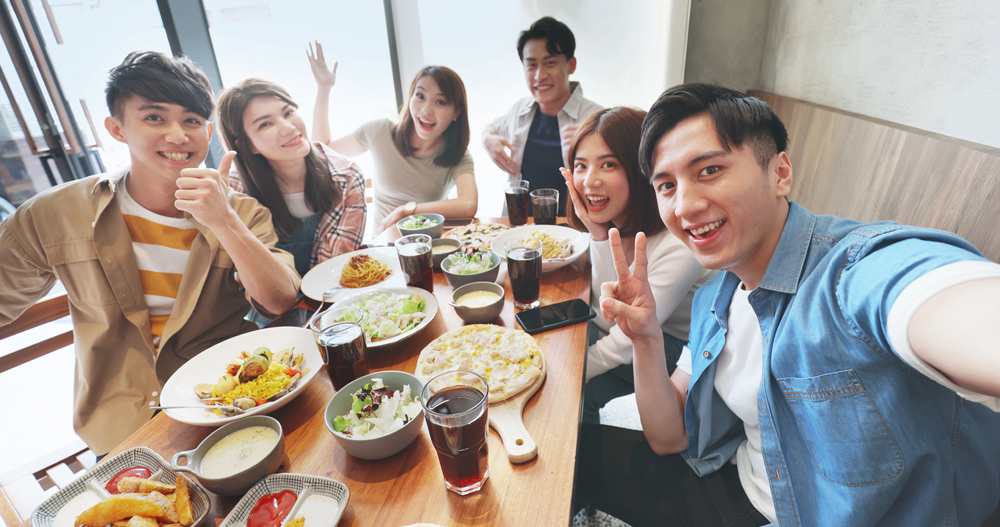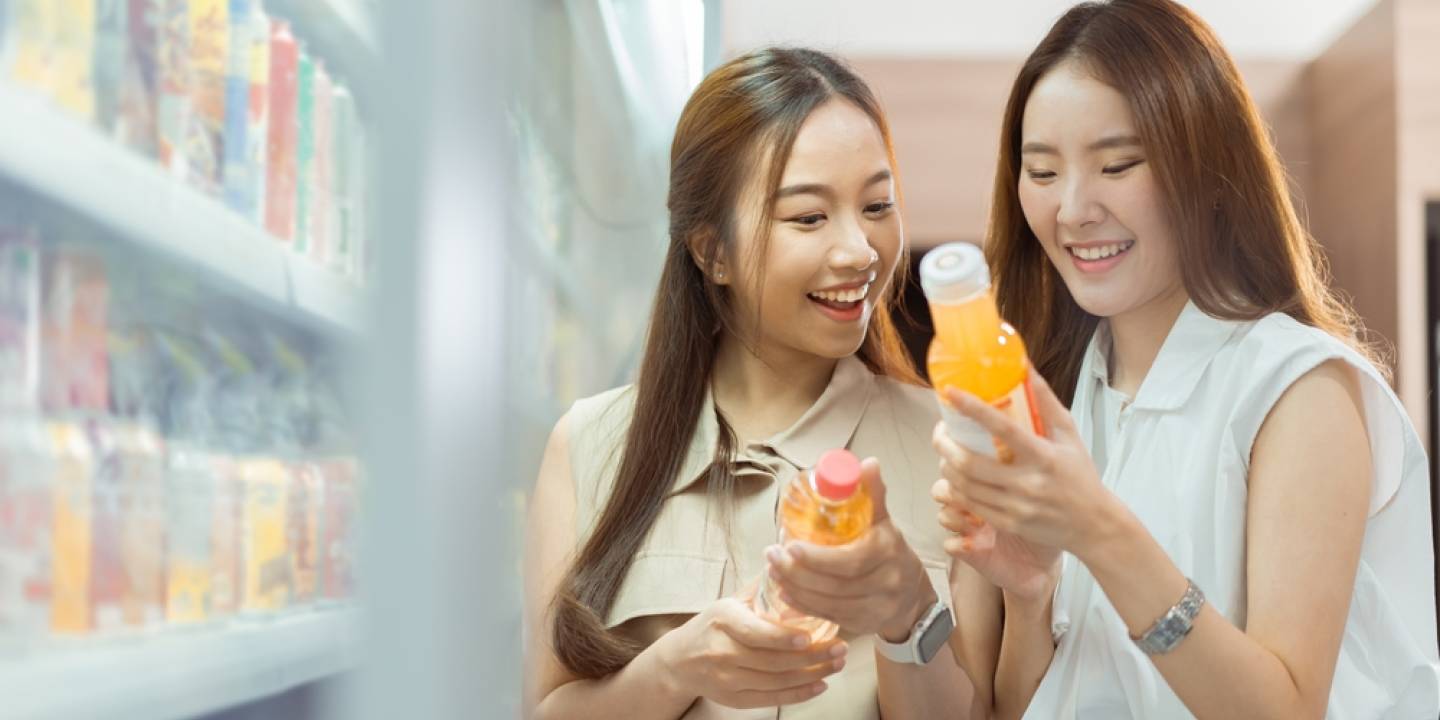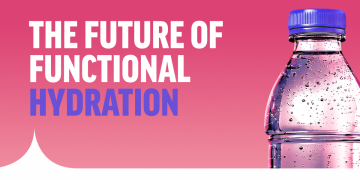In China, there is a huge consumer appetite for Western beverage innovation. China's beverage landscape is seeing innovative, often unusual, trends that are pushing the boundaries of flavour and function.
Health and wellness options
Rising disposable incomes and a growing middle class are fuelling demand for beverages perceived as healthier. This includes natural mineral water, low or no sugar teas and functional drinks with added vitamins or probiotics. Health benefits are a key feature of the food and drink products that Gen Z consumers look for, appealing to 77% of this segment.
Many consumers look for food and drink that influence cognitive capacity, manage stress levels and optimise brain function. More and more products contain clinically-proven nutrients that support cognitive and psychological functions, such as magnesium, B vitamins and zinc.
Concern over artificial additives
Food and drink safety is paramount for Chinese consumers and beverages with clear labelling, natural ingredients and traceability are gaining traction. There is a rise in products with natural claims and Chinese consumers are becoming increasingly aware of the negative impacts that artificial additives can have on wellbeing.
In the past five years, stevioside, a popular natural sweetener, has seen a significant rise in its inclusion within newly-launched carbonated soft drinks (CSD) and sparkling drinks, driven by consumer awareness of sugar intake and concerns surrounding artificial sweeteners. In 2023, the share of new product launches featuring 'no added sugar' and 'low/no/reduced glycaemic' claims nearly tripled and increased tenfold, respectively, compared to the share of new product launches in 2022.
More sparkle required
In an effort to captivate consumers with an even more invigorating and mood-lifting experience, carbonated soft drinks and sparkling beverage brands have introduced products featuring intensified carbonation to deliver a more stimulating sensation. Genki Forest, a Chinese start-up brand, took the lead by launching a strong carbonated drink with a cooling mint flavour which
claims to instantly refresh and boost mood.
The dominance of citrus flavours
Citrus flavours still play a dominant role in CSD and sparkling beverages. Five out of the top ten most popular flavour combinations include citrus fruit flavours, predominantly orange and lemon. Lime flavour has been gaining popularity and is emerging as a prominent contender in new product launches. Juice enhances taste and nutritional value but also meets the growing demand for beverages that are perceived as healthier alternatives.

Flavour blurring
Flavour blurring is a significant trend in the Chinese beverage market, where traditional boundaries between categories are disappearing. Consumers are increasingly drawn to innovative and unexpected flavour combinations. Tea can have added functional ingredients like guarana or taurine for an energy boost, and coffee is combined with elements like chocolate mousse for a more decadent experience. Pairings of sugar and dessert flavours with fruit have been well received in the tea and coffee beverage market, as well as cheese foam toppings.
Premium alcoholic beverages
One of the key trends in the alcoholic drinks market in China is the increasing demand for premium and imported alcoholic beverages, particularly wine, and especially among the younger generations. The rise of e-commerce platforms has also contributed to the growth of the market, making imported alcoholic drinks more accessible. Consumers are willing to pay more for unique experiences, with craft beers, imported wines and aged baijiu seeing significant growth.
The influence of social media
China's digital landscape heavily influences beverage trends. Eye-catching packaging, unique flavour combinations shared on social media platforms and endorsements from key influencers can significantly impact a beverage's popularity. The celebrity culture is enormous in urban China and it’s not uncommon for millennials to be queueing around the block so they can experience a limited edition bubble tea. Social media is Gen Z’s main source of inspiration for new foods and flavours, as witnessed with Wong Lo Kat's zanthoxylum armatum and green grape-flavoured sparkling herbal tea. It claims to have a tingling, numbing effect, with added sparkling flavour to enhance the experience. Just two days after launch, it was sold out on all online channels.

Guochao
‘Guochao’ literally means ‘China trend’ or, more popularly translated as ‘China Chic’. Consumers are gravitating towards products that celebrate and reinterpret traditional Chinese culture with a modern twist. National pride has a significant influence on the beverage industry and 74% of Gen Z consumers say that their heritage is an important part of their identity.
These beverages offer a new take on familiar ingredients, appealing to young consumers' sense of adventure, while staying connected to their heritage. Established tea brands have partnered with the Palace Museum to create special edition teas, and milk tea shops offer drinks inspired by historical figures. These collaborations leverage the popularity of established, cultural icons and create a sense of exclusivity for consumers.
Some more unique trends
Broths infused with herbs and spices are replacing milk as a base for tea, with savoury toppings like seaweed or crumbled pork floss. Aubergine is being blended into smoothies and juices, promoted for its health benefits and mild flavour. Coffee can be found with unexpected, functional additions like donkey-hide gelatine which is alleged to help joint healing. Tanghulu - candied fruits on skewers, a popular street food - are now inspiring beverages, with hawthorn berry or strawberry-coated candy floss also influencing drink flavours.
It's important to note that not all of these trends become mainstream, but they highlight the adventurous spirit of Chinese consumers and the beverage industry's willingness to experiment.
Want more?
Click the button on the left to sign up to receive our latest insights, market intelligence, and product updates straight to your inbox, or follow us on LinkedIn and join the conversation.



